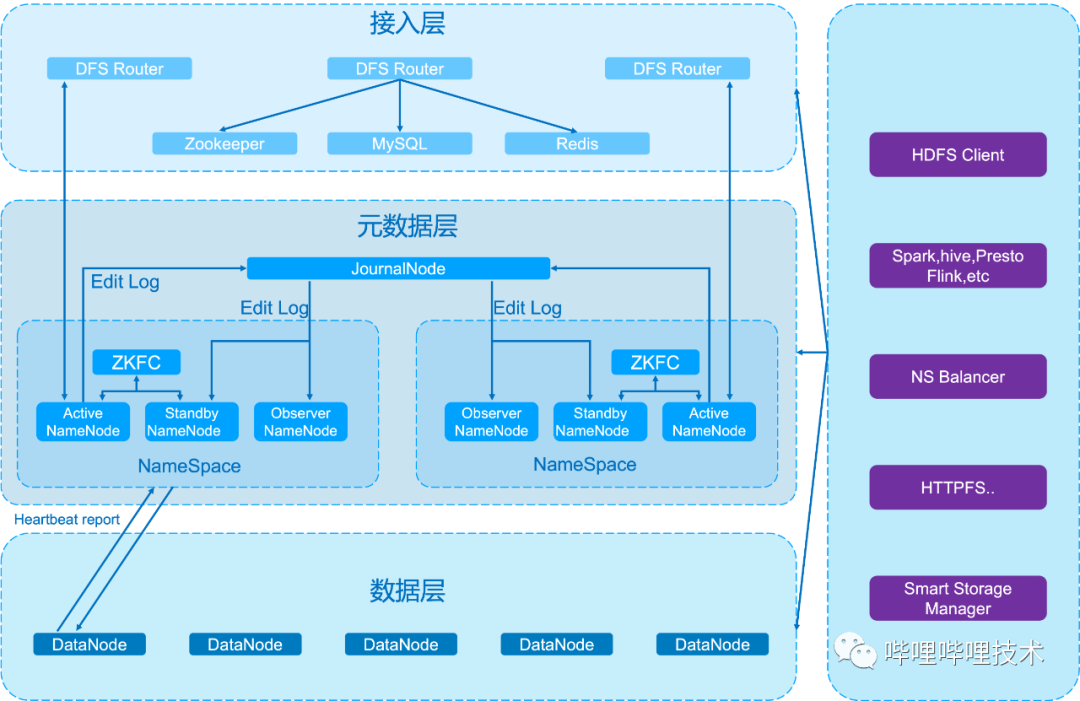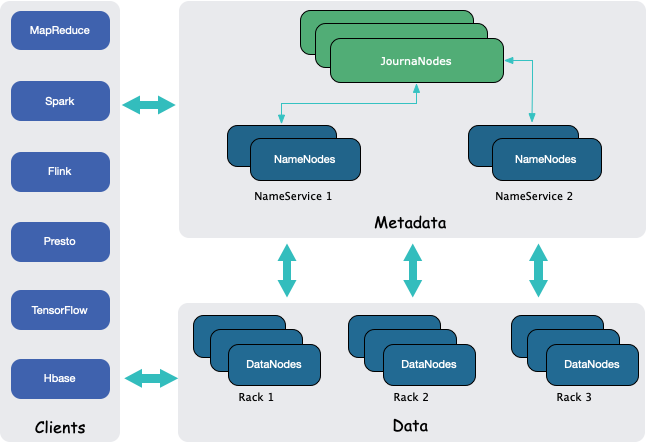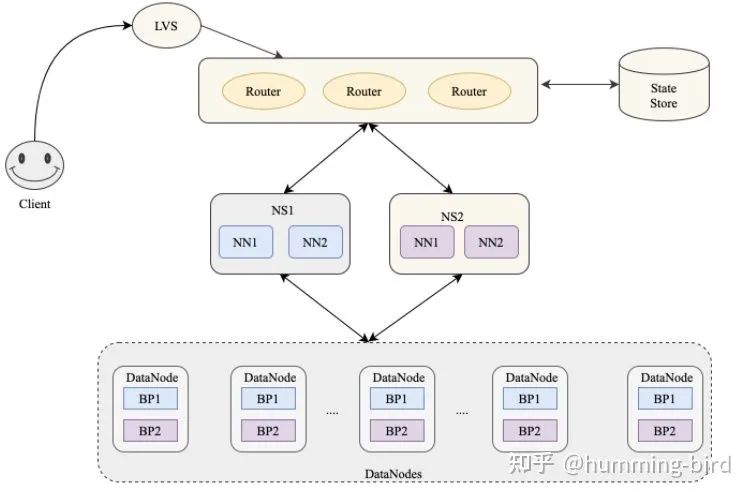在MapReduce作业中的数据输入和输出必须使用到相关的InputFormat和OutputFormat类,来指定输入数据的格式,InputFormat类的功能是为map任务分割输入的数据。
InputFormat类中必须指定Map输入参数Key和Value的数据类型,以及对输入的数据如何进行分割。我们可以在Hadoop源码中看到InputFormat类提供的两个抽象方法:
/**
* User: 过往记忆
* Date: 15-07-11
* Time: 下午10:24
* bolg:
* 本文地址:/archives/1407
* 过往记忆博客,专注于hadoop、hive、spark、shark、flume的技术博客,大量的干货
* 过往记忆博客微信公共帐号:iteblog_hadoop
*/
public abstract class InputFormat<K, V> {
public abstract
List<InputSplit> getSplits(JobContext context
) throws IOException, InterruptedException;
public abstract
RecordReader<K,V> createRecordReader(InputSplit split,
TaskAttemptContext context
) throws IOException, InterruptedException;
}
每一个InputFormat类的子类必须实现这两个方法,其中getSplits函数说明数据是怎么分割的,并将分割的数据存放到List中;而createRecordReader函数则根据不同的InputFormat实现创建不同的RecordReader,并读入相关的数据。
对于任何的InputFormat实现最重要的是确定如何来划分数据的文件,划分出来InputSplit将直接影响到map并行的数量,因为对于每一个分片MapReduce将会单独启动一个Map来处理。如果输入文件的划分不合理,那么启动的Map数据将变少,这样会直接影响到MapReduce作业的执行速度。
本文为了方便起见,主要介绍TextInputFormat的相关实现细节。在TextInputFormat类中仅仅实现了InputFormat类的createRecordReader函数,而getSplits的相关实现则由FileInputFormat类实现。FileInputFormat类是比较重要的类,它是所有基于文件InputFormat的父类,并提供了一些通用的方法。下面我们先来看看TextInputFormat类的关键实现代码:
public class TextInputFormat extends FileInputFormat<LongWritable, Text>
.....
@Override
public RecordReader<LongWritable, Text>
createRecordReader(InputSplit split,
TaskAttemptContext context) {
String delimiter = context.getConfiguration().get(
"textinputformat.record.delimiter");
byte[] recordDelimiterBytes = null;
if (null != delimiter)
recordDelimiterBytes = delimiter.getBytes(Charsets.UTF_8);
return new LineRecordReader(recordDelimiterBytes);
}
从上面的代码可以看到TextInputFormat类是FileInputFormat类的子类。TextInputFormat类是Key类型是LongWritable,其实它就是输入文本的偏移量;Value类型是Text,这就是文件的行内容。接下来比较重要的是createRecordReader函数的实现,首先会根据textinputformat.record.delimiter参数判断输入文件的行分隔符,默认情况下是\n。然后根据行的分割符创建了一个LineRecordReader。关于LineRecordReader在后面的文章中再介绍。
TextInputFormat类中还有一个isSplitable函数的实现,它是用来判断输入的文件是否可分割,实现如下:
/**
* User: 过往记忆
* Date: 15-07-11
* Time: 下午10:24
* bolg:
* 本文地址:/archives/1407
* 过往记忆博客,专注于hadoop、hive、spark、shark、flume的技术博客,大量的干货
* 过往记忆博客微信公共帐号:iteblog_hadoop
*/
@Override
protected boolean isSplitable(JobContext context, Path file) {
final CompressionCodec codec =
new CompressionCodecFactory(context.getConfiguration()).getCodec(file);
if (null == codec) {
return true;
}
return codec instanceof SplittableCompressionCodec;
}
如果输入文件不是压缩形式的,直接返回可分割(true);如果输入文件是压缩的,那么判断这个压缩类是否是SplittableCompressionCodec接口的实现类(Hadoop内置的SplittableCompressionCodec类实现只有BZip2Codec)。
接下来我们再来看看FileInputFormat类中getSplits函数的实现,代码如下:
minSize = Math.max(getFormatMinSplitSize(), getMinSplitSize(job));
long maxSize = getMaxSplitSize(job);
// generate splits
List<InputSplit> splits = new ArrayList<InputSplit>();
List<FileStatus> files = listStatus(job);
for (FileStatus file: files) {
Path path = file.getPath();
long length = file.getLen();
if (length != 0) {
BlockLocation[] blkLocations;
if (file instanceof LocatedFileStatus) {
blkLocations = ((LocatedFileStatus) file).getBlockLocations();
} else {
FileSystem fs = path.getFileSystem(job.getConfiguration());
blkLocations = fs.getFileBlockLocations(file, 0, length);
}
if (isSplitable(job, path)) {
long blockSize = file.getBlockSize();
long splitSize = computeSplitSize(blockSize, minSize, maxSize);
long bytesRemaining = length;
while (((double) bytesRemaining)/splitSize > SPLIT_SLOP) {
int blkIndex = getBlockIndex(blkLocations, length-bytesRemaining);
splits.add(makeSplit(path, length-bytesRemaining, splitSize,
blkLocations[blkIndex].getHosts(),
blkLocations[blkIndex].getCachedHosts()));
bytesRemaining -= splitSize;
}
if (bytesRemaining != 0) {
int blkIndex = getBlockIndex(blkLocations, length-bytesRemaining);
splits.add(makeSplit(path, length-bytesRemaining, bytesRemaining,
blkLocations[blkIndex].getHosts(),
blkLocations[blkIndex].getCachedHosts()));
}
} else { // not splitable
splits.add(makeSplit(path, 0, length, blkLocations[0].getHosts(),
blkLocations[0].getCachedHosts()));
}
} else {
//Create empty hosts array for zero length files
splits.add(makeSplit(path, 0, length, new String[0]));
}
}
// Save the number of input files for metrics/loadgen
job.getConfiguration().setLong(NUM_INPUT_FILES, files.size());
sw.stop();
if (LOG.isDebugEnabled()) {
LOG.debug("Total # of splits generated by getSplits: " + splits.size()
+ ", TimeTaken: " + sw.elapsedMillis());
}
return splits;
}
listStatus方法将获取MapReduce作业需要输入的所有文件。然后根据isSplitable函数来获取所有问及那的块,并存储到BlockLocation数组中。如果文件是可分的,那么根据long splitSize = computeSplitSize(blockSize, minSize, maxSize);来计算每个块的大小,最后通过makeSplit函数来创建分块,并存放到List中。
原创文章版权归过往记忆大数据(过往记忆)所有,未经许可不得转载。
本文链接: 【MapReduce数据输入中InputFormat类源码解析】(https://www.iteblog.com/archives/1407.html)










